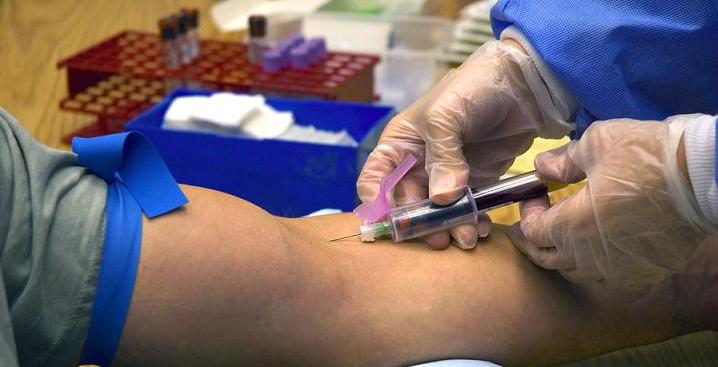How to Become a Phlebotomist: Essential Steps to Launch Your Medical Career
Are you interested in entering the healthcare field and making a tangible difference in patients’ lives? Becoming a phlebotomist is an excellent way to start a rewarding medical career, especially if you’re drawn to laboratory work and patient interaction.In this comprehensive guide, we’ll walk you thru the essential steps to become a certified phlebotomist, highlighting key requirements, training options, certification processes, and practical tips for success.
Introduction
Phlebotomy is a vital component of the healthcare system,involving the collection of blood samples for testing,transfusions,research,and donation. As a phlebotomist, you’ll work in hospitals, clinics, laboratories, and blood banks, providing crucial support to medical professionals and ensuring patient care quality. if you’re contemplating a career in this field, understanding the necessary steps to become a professional phlebotomist will help you navigate your journey with confidence. Let’s explore how to turn your ambition into a tangible career path.
Essential Steps to Become a Phlebotomist
1. Understand the Role and Requirements
Before diving into training, it’s vital to understand what being a phlebotomist entails.Key responsibilities include:
- Drawing blood from patients safely and hygienically
- Labeling and handling blood samples correctly
- Maintaining patient comfort and safety
- Keeping accurate records
Requirements to pursue a career in phlebotomy typically include minimum education levels, physical stamina, and good communication skills.
2. Meet Educational Prerequisites
Most phlebotomy training programs require:
- High school diploma or GED
- Basic math and reading skills
- Criminal background check (varies by state)
While some aspiring phlebotomists opt for associate degrees in healthcare or related fields, a high school diploma combined with specialized training is usually sufficient to start.
3. Enroll in a Certified Phlebotomy training Program
Choosing the right training program is crucial. Look for accredited institutions that provide comprehensive coursework covering:
- Anatomy and physiology
- Blood collection techniques
- Safety and infection control
- Patient interaction and communication skills
Training can be completed through:
- Community colleges
- Vocational schools
- Online courses (combined with hands-on practice)
Most programs last between 8 to 16 weeks and include a practical component to develop hands-on skills.
4. Gain Hands-On Experience
Practical experience in real-world settings is essential. During your training, you’ll participate in clinical internships or externships, which allow you to:
- Apply learned techniques under supervision
- Build confidence in vein selection and blood collection
- Learn to handle challenging patients
Some programs facilitate partnerships with local healthcare facilities to provide externship opportunities.
5. Obtain certification and Licensure
While certification requirements vary by state, becoming certified considerably boosts your employability and credibility. The most widely recognized certifications include:
| Certifying Agencies | Prerequisites | Exam Details |
|---|---|---|
| American society for Clinical Pathology (ASCP) Phlebotomy Technician (PBT) Certification |
Completion of approved training program and/or clinical experience | Multiple-choice exam |
| National Phlebotomy Association (NPA) | Training hours and clinical practice | Written exam + practical assessment |
| American Medical Certification Association (AMCA) | Certain education and experience requirements | Online exam |
Check your state’s specific licensure laws-some states require a license to practice, while others do not.
6. Apply for Jobs and Continue Your education
After certification,you can begin applying for phlebotomy positions in hospitals,laboratories,clinics,and blood donation centers. Build your skills further by:
- Networking with healthcare professionals
- Participating in advanced workshops
- Specializing in areas like pediatric or forensic phlebotomy
Ongoing education can enhance your career and open doors to supervisory roles or specialized fields.
Benefits and Practical tips for Aspiring Phlebotomists
- Rewarding Work: Make a real difference in patient health outcomes.
- Good Job Outlook: The demand for phlebotomists continues to grow, especially in hospitals and diagnostic labs.
- Flexibility: Opportunities for part-time, full-time, or travel positions.
- Practical tips:
- Focus on developing excellent venipuncture skills.
- Practice good communication to ease patient anxiety.
- Keep certifications current by attending refresher courses.
- Build a professional network through industry associations and events.
case Study: From Novice to certified Phlebotomist
Meet Sarah: First-Hand Experience
Sarah was initially nervous about sticking patients with needles. After enrolling in a reputable community college’s phlebotomy program,she completed her clinical hours at a busy hospital. She earned her certification through the ASCP and now works at a large medical center. Her advice? “Practice makes perfect,and don’t underestimate the power of good bedside manner.”
Conclusion
Becoming a phlebotomist is an achievable and fulfilling career choice for those interested in healthcare and patient support. By following the essential steps-meeting educational requirements,completing accredited training,gaining hands-on experience,and earning certification-you can launch a triumphant medical career. Remember, continuous learning and honing your skills are key to long-term success in this dynamic field. Start your journey today and take the first step toward making a meaningful difference in healthcare as a certified phlebotomist.
Ready to Start Your Medical Career?
If you’re passionate about healthcare and helping others, now is the perfect time to pursue a career in phlebotomy. Explore training programs in your area,check your state’s licensure laws,and begin your certification journey today!
